ECommerce Fulfillment Success: The Ultimate Guide to Achieving Success in Online Retail
As the world becomes increasingly digitalized, so does the way we shop. E-commerce has revolutionized the retail industry, allowing consumers to purchase products and services online from the comfort of their own homes.
With this shift, retailers have had to adapt their fulfillment strategies to meet the demands of online shopping.
Today’s consumers expect more than just a product; they demand a shopping experience that is fast, reliable, and, above all, convenient. This sets a high bar for eCommerce businesses striving to meet and exceed these expectations.
The challenge? Online retailers have to revolutionize retail fulfillment in ways that not only keep pace with customer demands but also anticipate future trends.
What is the ecommerce fulfillment process?

ECommerce fulfillment is the seamless journey an online order takes from the click of the “purchase” button to the delivery at the customer’s doorstep.
It is your behind-the-scenes magic, the unsung hero that can turn a simple purchase on your e-commerce into a memorable or terrifying journey.
It encompasses all the processes involved in receiving, processing, packing, and shipping orders to customers.
Why does eCommerce fulfillment matter so much?
The fulfillment process directly impacts these expectations, making it a key differentiator in the competitive online business.
The Link Between Fulfillment and Revenue

The efficiency of your fulfillment process isn’t just about logistics—it’s a critical driver of your business’s financial health.
Understanding the direct link between fulfillment and revenue can unlock new profitability and customer satisfaction levels.
- Streamlined Operations Reduce Costs: A seamless process minimizes errors and delays, reducing the fulfillment costs associated with returns, lost sales, and dissatisfied customers.
- Faster Delivery Enhances Customer Loyalty: In the era of instant gratification, speed is currency. Offering quick and reliable delivery can set your e-commerce business apart, encouraging repeat purchases and increasing customer lifetime value.
- Inventory Management Maximizes Sales Opportunities: Effective inventory management ensures the right products are available at the right time. This alignment between supply and demand minimizes stockouts and excess inventory, which can erode revenue.
Example – Amazon’s Prime Efficiency
Amazon’s Prime service is a testament to how fast, reliable fulfillment can drive revenue. With its sophisticated distribution network and advanced warehouse technology, Amazon offers same-day or two-day shipping on millions of items.
This commitment to speedy delivery has increased customer satisfaction and significantly boosted Prime membership subscriptions, contributing to Amazon’s revenue growth.
Unveiling the Warehouse: The Heartbeat of E-Commerce Logistics
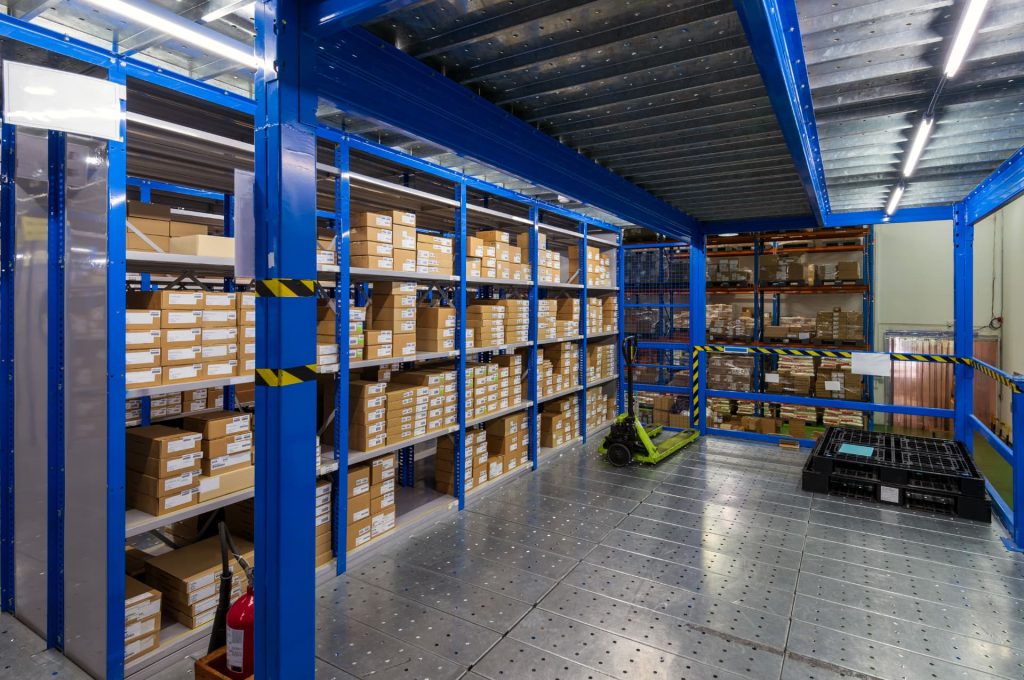
Imagine your e-commerce warehouse as the central heartbeat of your business, where products await their journey to customers.
This organized hub streamlines operations, simplifying how goods are received, stored, and sent. A well-structured warehouse is crucial for fast and accurate order fulfillment, acting as a product launchpad.
It ensures efficient inventory management, preventing stock issues while accommodating growth, making scaling smoother.
A thoughtfully managed warehouse is key to seamless logistics, impacting everything from customer satisfaction to operational scalability.
GizmoHub’s E-commerce Warehousing Example:
Let’s consider the example of an eCommerce business selling a wide range of consumer electronics, which we’ll call “GizmoHub.”
Background: GizmoHub started as a small online store selling niche tech gadgets. As their product range and customer base grew, they realized the need for a more structured approach to store and manage their inventory to meet the increasing demand efficiently.
Warehousing Solution: GizmoHub invested in a dedicated e-commerce warehouse located centrally to their largest customer base, reducing shipping times and costs. This warehouse has modern shelving units optimized for easy access and minimal movement, facilitating quick picking and packing.
E-commerce Order Fulfillment: A Step-by-Step Guide
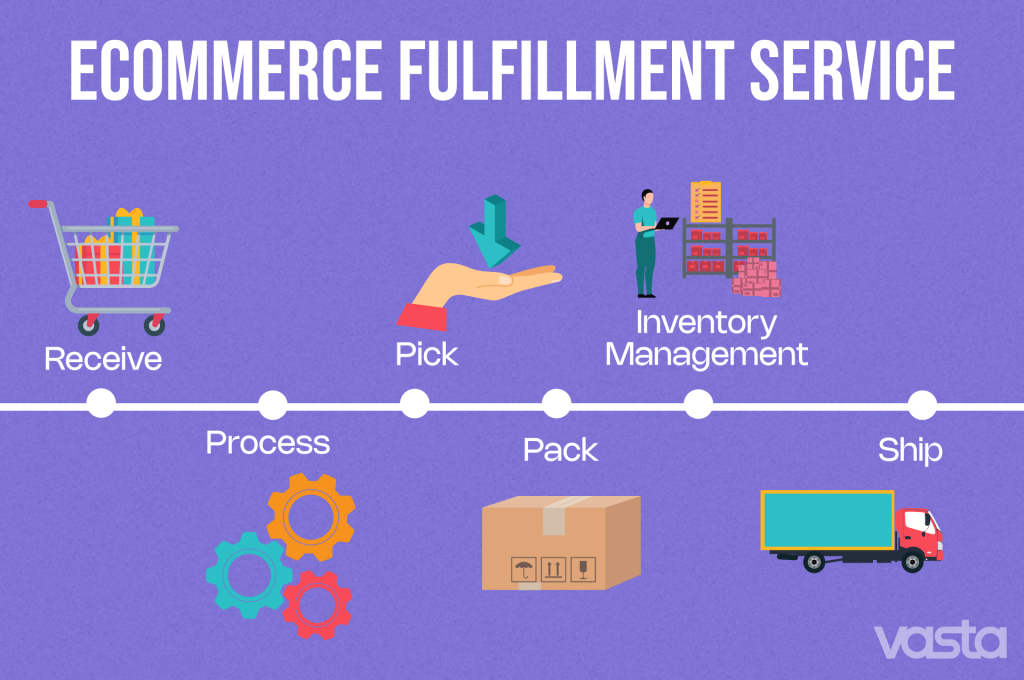
Navigating the entire eCommerce fulfillment process is crucial for online businesses aiming to keep customers satisfied and loyal.
Let’s break down the 6 key steps to efficiently fulfill an e-commerce order, ensuring a smooth operation and a delightful customer experience.
1º The Receiving Inventory Step

Every journey in inventory management begins not with the ping of an order notification but with the critical first step of receiving inventory.
In this foundational stage, products cross the threshold into your warehouse, marking their transition from incoming goods to integral parts of your sales arsenal.
Here, the stage is set for operational success, with each item meticulously accounted for and securely stored until it finds its way to a customer.
Receiving inventory does more than add numbers to your stock count; it lays the foundation for your entire inventory management strategy.
But how can you do this well?
- Streamline Your Inventory Management – Begin with a robust inventory management system that offers real-time insights. This ensures you always know what’s in stock, reducing the risk of overselling and understocking.
- Tools like Shopify or WooCommerce offer integrated solutions that sync your online sales channels and inventory, making management a breeze.
Example:
An online camping gear retailer adopted Shopify’s inventory management system to automate their stock updates. This move significantly reduced their overselling incidents during peak seasons by providing accurate, real-time inventory data.
2º The Order Processing Step

The path to operational excellence takes a significant leap forward the moment a customer’s order begins its journey from click to delivery.
Order processing is the sequence of steps to efficiently and accurately fulfill customer orders. This operation encompasses everything from verifying order details to selecting items from inventory, packaging, and shipping.
It tests an e-commerce business’s operational agility, requiring both precision and speed to ensure customer satisfaction and loyalty.
As soon as an order is placed, the race against time begins. Here, precision and swiftness are not just goals; they’re necessities – and to achieve this, automation is your best friend.
But how can you do this well?
- Verify Order Details: Ensure each order’s accuracy, confirming product selections, quantities, and customer information.
- Inventory Management: Check inventory levels to guarantee that products are in stock and ready for shipment.
- Coordination with Fulfillment: Communicate with fulfillment centers or warehouses to prepare orders for shipping, which includes picking, packing, and labeling.
- Embrace Automation in Order Processing – Imagine a system so adept that it automatically determines the most efficient route for an order, directing it to the fulfillment center best positioned to expedite delivery.
An Order Management System (OMS) doesn’t stop there; it meticulously selects the most suitable shipping method for each order and generates packing slips in a flash, ensuring no wasted time.
Example:
An electronics online retailer faced with increasing order volumes and a growing rate of shipping errors turned to an order management system to streamline its operations.
The OMS they implemented was programmed to automatically route orders to the fulfillment center closest to the customer, ensuring faster delivery times and reduced shipping costs.
3º The Packing Step

The packing step plays a critical role that goes beyond mere preparation for shipment.
It involves two essential actions: picking and packing. Picking is retrieving the ordered items from their storage locations within the warehouse. Packing, however, is the careful encasement of these items in preparation for their journey to the customer.
Accuracy here reduces the chance of returns, while thoughtful packaging can enhance the unboxing experience, leaving a lasting impression on your customers.
But how can you do this well?
- Leverage Technology: Use barcode scanners and optimize your warehouse layout to expedite picking.
- Custom Packaging: Invest in quality packing materials that protect the items during transit and consider custom packaging to enhance the customer experience.
- Warehouse Layout Optimization: Design your warehouse layout to facilitate easy and quick access to popular items.
Example:
An online sustainable clothing boutique significantly enhanced customer satisfaction by improving its packaging process. Implementing barcode scanners reduced picking errors, while a redesigned warehouse layout increased efficiency.
The investment in eco-friendly, branded packaging emphasized their sustainability commitment and enhanced the unboxing experience, leading to reduced returns, positive social media feedback, and a marked rise in repeat customers.
4º The Shipping Step

Shipping is the culmination of the e-commerce process, where orders are dispatched to their final destinations.
It’s a phase that demands precision because shipping can make or break the customer experience, so choose a reliable shipping partner who offers tracking and flexible delivery options.
The shipping step, often seen as the final logistical hurdle, is, in fact, a powerful opportunity to leave a lasting positive impression on your customers.
By choosing the right partners and technologies, e-commerce businesses can turn shipping into a seamless, reassuring experience that reinforces customer trust and lays the groundwork for repeat business.
But how can you do this well?
- Select a Reliable Shipping Partner: Your choice of courier should be based on more than just cost. Reliability, speed, and the availability of flexible delivery options are crucial factors that contribute to a positive customer experience.
- Opt for Smart Shipping Solutions: Use platforms like ShipStation or Shippo that offer shipping rate comparisons, automate shipping label creation, and provide real-time tracking updates to customers, improving the delivery experience.
- Provide Real-Time Tracking: Transparency is key to building trust. Offering customers real-time tracking information lets them stay informed about their order’s status, enhancing their sense of security and anticipation.
Example:
An online retailer of eco-friendly home products improved its customer experience by enhancing its shipping strategy.
Through a partnership with a reliable, efficient shipping service and the integration of ShipStation for shipping optimization, they offered competitive rates and real-time order tracking.
This led to higher customer satisfaction and fewer inquiries about order statuses, demonstrating the significant benefits of effective shipping management.
5º The Delivery Step
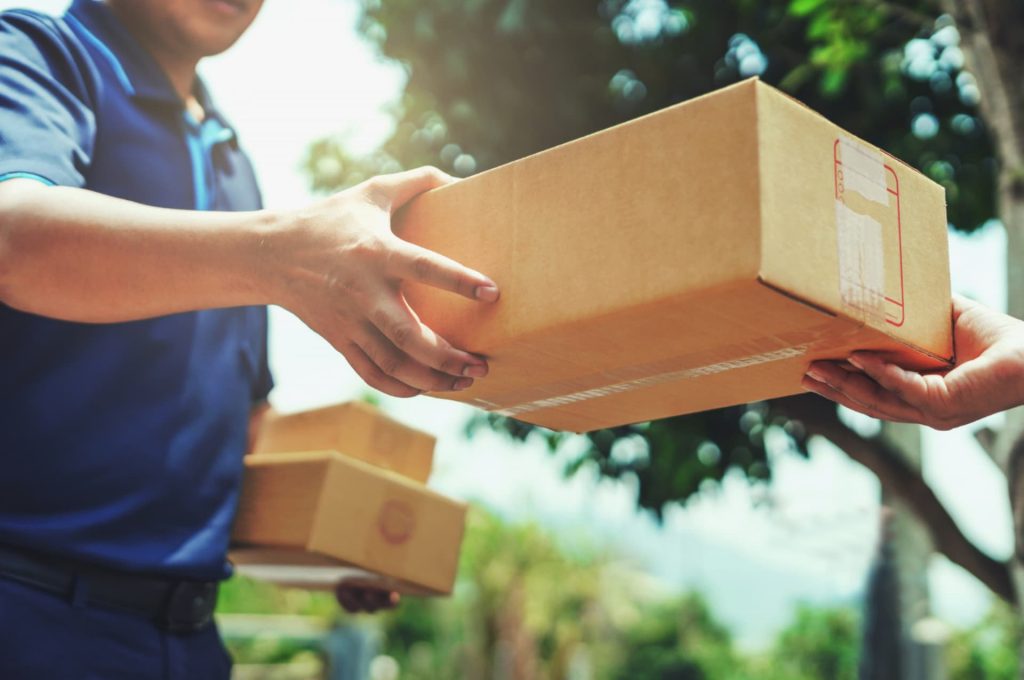
The delivery step, while the final act in the e-commerce fulfillment process, is far from a mere conclusion. It’s a powerful opportunity to solidify your brand’s reputation for excellence and reliability.
Delivery is the direct handoff of the ordered products to the customer. It represents the physical connection between your e-commerce business and your customers, making it a pivotal moment for customer satisfaction.
The critical instance can transform a first-time buyer into a lifelong customer.
The success of this step relies heavily on the seamless execution of all prior stages—particularly shipping—ensuring that orders arrive in a timely manner and perfect condition.
But how can you do this well?
- Choose Efficient Shipping Services: Opt for services known for their promptness and care in handling packages to minimize delays and damage.
- Ensure Accurate Shipping Information: The precision of shipping details is paramount. Double-check addresses and delivery instructions with customers to avoid misdeliveries and delays, enhancing the overall reliability of the delivery process.
- Communicate Proactively: Keep your customers informed about the journey of their order. Notifications upon dispatch and before delivery can significantly enhance the customer experience, setting clear expectations and building excitement.
Example:
An online bookstore enhanced customer retention by optimizing its delivery process. They minimized delivery failures by partnering with a fast, reliable shipping service and verifying shipping addresses at order confirmation.
An automated system providing order status updates, including delivery notifications, significantly enhanced customer satisfaction, resulting in positive feedback and increased repeat orders.
6º The Returns Processing Step

Unfortunately, the customer journey doesn’t always conclude with delivery. Various reasons may lead to buyer’s remorse, prompting customers to return their purchase to the e-commerce store and request a refund.
This stage offers a unique opportunity to reinforce customer trust and loyalty, even in potentially negative experiences.
Businesses can cultivate a positive brand perception and encourage repeat purchases by reimagining returns as a service rather than a setback.
Handling returns efficiently is essential for maintaining customer satisfaction and trust.
But how can you do this well?
- Invest in Returns Management Software: Returns management software can automate many aspects of returns, from initiating the return process to restocking items, reducing the manual effort involved and minimizing errors.
- Integrate with Your E-Commerce Platform: Choose a returns management solution that seamlessly integrates with your existing e-commerce platform to ensure a smooth workflow.
- Develop a Clear, Hassle-Free Return Policy: Transparency is key. A straightforward and easily accessible return policy can alleviate customer anxieties about making purchases, knowing that returns, if necessary, will be uncomplicated.
- Enable Easy Return Initiation for Customers: A user-friendly interface that allows customers to initiate returns easily is essential. This customer-centric approach can turn the potentially negative experience of a return into a positive interaction with your brand.
Example:
An online fashion retailer, enhanced customer service with a new returns management system integrated into their e-commerce platform, enabling easy online returns.
Their clear return policy, which is easily accessible on their website, improved customer experiences by setting explicit expectations. This led to increased customer loyalty and fewer return inquiries, showing that a streamlined returns process can transform challenges into opportunities for brand reinforcement.
Bonus – The Automating Step
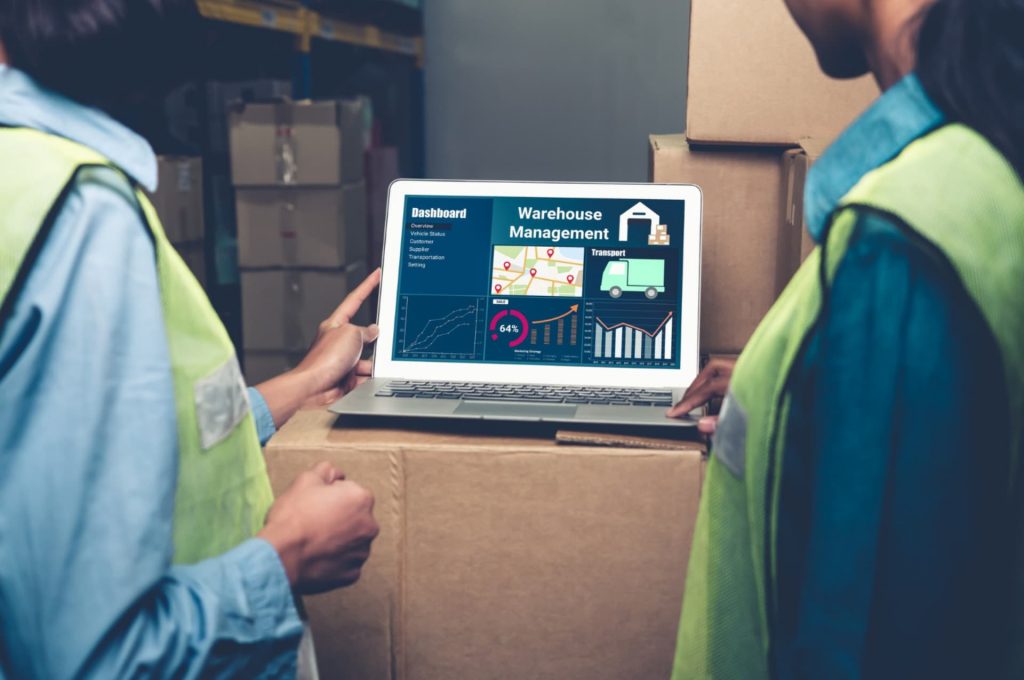
Envision automating your e-commerce fulfillment as planting a self-sustaining garden. Initially, it requires planning and effort to set up—choosing the right seeds (technology) and planting them in fertile soil (your business framework).
Once established, this garden doesn’t rely on the labor-intensive task of daily watering by hand (manual processes). Instead, it thrives on an automated irrigation system (fulfillment software), consistently nourishing the plants to bloom (customer satisfaction) without constant oversight.
- Leverage Data Analytics for Forecasting: Use the power of data analytics to predict future buying trends and stock levels.
- Analyzing past sales data helps you anticipate demand, ensuring you’re always prepared for seasonal spikes or promotional campaigns.
What are the 4 types of fulfillment?
Understanding the types of fulfillment processes is crucial for any eCommerce business aiming to streamline operations and enhance customer satisfaction.
Let’s dive into the 4 types of fulfillment strategies that retailers are employing in their ecommerce companies
1. Self-Fulfillment Revisited

This hands-on approach means you’re in charge of storing, packing, and shipping products directly to your customers. It offers maximum control and personalization of the customer experience, positioning your storage facility as the core of your house fulfillment efforts
This grassroots approach is not just about packing boxes in your living room; it’s about building a foundation.
For businesses with unique products or those offering a high degree of customization, self-fulfillment allows for an unparalleled level of quality control and personal touch.
Consider leveraging local courier services for faster delivery within specific regions or adopting inventory management software to streamline operations.
Consider the story of:
A startup specializing in sustainable home products.
They began their journey with self-fulfillment, utilizing a spare room to stock and manage inventory. As orders increased, they transitioned to a local warehouse space, implementing a cloud-based inventory management system to maintain visibility and control.
This approach allowed them to maintain their commitment to sustainability by hand-selecting eco-friendly packaging materials for each order.
2. Third-Party Fulfillment (3PL) Unpacked

When you partner with a 3PL provider, you’re outsourcing the logistics of storing, packing, and shipping to experts. This option is scalable and removes the need to manage a warehouse.
Beyond mere third-party logistics outsourcing, choosing an eCommerce fulfillment provider is about embracing growth without the growing pains.
Look for ecommerce fulfillment companies offering value-added services like kitting, subscription box assembly, or international shipping solutions to expand your market reach.
Evaluating a 3PL’s integration capabilities with your eCommerce platform ensures a seamless flow of information and orders.
Examples of leading 3PL companies include:
- ShipBob: Known for its fast shipping and order accuracy, ShipBob offers a comprehensive solution that integrates with major eCommerce platforms, providing warehousing, inventory management, and analytics to optimize fulfillment processes.
- Fulfillment by Amazon (FBA): Offering access to Amazon’s vast distribution network, FBA lets sellers store their products in Amazon’s fulfillment centers. Amazon handles packing, shipping, customer service, and returns for these orders, enabling sellers to leverage Amazon Prime’s fast shipping.
Consider the story of:
An online apparel retailer partnered with a 3PL provider to manage its explosive growth.
They chose a 3PL with multiple warehouses nationwide, significantly reducing delivery times.
This strategic move improved customer satisfaction and allowed it to focus on its core business—designing and marketing trendy clothing lines.
3. Dropshipping Demystified

In dropshipping, you sell products shipped directly to your customers by the supplier. This model eliminates your need to handle products directly, reducing overhead costs.
More than a hands-off approach, successful dropshipping relies on building robust relationships with suppliers and maintaining a keen eye on product quality and fulfillment provider speed. This method streamlines the Products to Customers’ journey without needing a physical storage facility on your part.
Innovative eCommerce businesses use dropshipping to test new products without inventory risks or to complement their existing product lines with broader offerings.
Consider the story of:
An online gadget store leveraged dropshipping to offer a wider range of products without the risk of inventory holding costs.
By carefully selecting suppliers known for quality and reliability, it introduced innovative tech products to its catalog, testing market response with minimal upfront investment.
This model enabled them to quickly adapt their product offerings based on consumer trends and feedback.
4. Hybrid Fulfillment Explored

A blend of fulfillment methods tailored to different aspects of your business. It allows for flexibility and optimization based on product type, customer location, or other factors.
The hybrid model is like conducting an orchestra, where different fulfillment methods harmonize to create a seamless customer experience.
This strategy might combine self-fulfillment for flagship products, thus ensuring house fulfillment quality, while relying on 3PL for bulk orders and dropshipping for low-volume items, tapping into the network of fulfillment centers.
The key is to find the right mix that supports your business model while remaining flexible to change.
Consider the story of:
A purveyor of fine foods and kitchenware adopted a hybrid fulfillment model to optimize operations.
For their high-demand spices and sauces, they used self-fulfillment to ensure product freshness and quality. Meanwhile, bulky kitchenware items were fulfilled through a 3PL partner, optimizing storage and shipping costs.
This strategic mix allowed them to offer exceptional service across its diverse product range.
Choosing the Right Fulfillment Partner

Let’s dive into the process of finding your perfect partner, followed by real-world suggestions of e-commerce fulfillment centers that could align with your business needs.
How to choose your partner
A fulfillment partner acts as an extension of your business, taking charge of storing, packing, and shipping your products.
But how do you ensure you choose a partner that aligns with your brand’s values, efficiency standards, and growth ambitions?
- Assess Their Track Record: Research potential partners’ history, customer feedback, and case studies. A reliable partner should have a proven track record of success and high customer satisfaction rates.
- Evaluate Technology Compatibility: Ensure their technology seamlessly integrates with your e-commerce platform. This includes inventory management, order processing, and customer communication functionalities.
- Consider Scalability: Your partner should be able to grow with you, accommodating increases in order volume and storage needs without compromising on service quality.
- Analyze Geographic Coverage: Check if the partner’s warehouse locations align with your customer base to optimize shipping times and logistics costs.
- Review Pricing and Transparency: Understand their pricing model, including any additional fees for storage, handling, or peak season surcharges. Opt for partners with transparent pricing structures.
Some Top Fulfillment partner

Here are practical insights into how partnering with recognized fulfillment centers can elevate your e-commerce strategy:
- Amazon Fulfillment (FBA): Utilize FBA to access Amazon’s world-class fulfillment network, offering your customers fast and reliable shipping, including Prime options. This can significantly increase your products’ visibility and appeal on the Amazon marketplace.
- ShipBob: For businesses looking for a flexible and scalable fulfillment solution, ShipBob provides seamless integration with your online store, allowing for efficient management of orders and inventory across multiple sales channels.
- FedEx Fulfillment: Consider FedEx Fulfillment for a comprehensive solution that manages your inventory, fulfills orders, and extends your reach globally through its extensive shipping and logistics network.
- Rakuten Super Logistics: If order accuracy and customer satisfaction are your top priorities, Rakuten Super Logistics offers a compelling service with an accuracy guarantee, ensuring that your customers receive the right product on time, every time.
By selecting a fulfillment center that aligns with your business needs and goals, you can optimize your supply chain, reduce operational burdens, and focus on scaling your e-commerce business.
Each of these examples showcases a fulfillment center that brings unique strengths, from global logistics networks to technology-driven solutions, providing e-commerce businesses with the tools they need to succeed in a competitive marketplace.
The technology behind the entire fulfillment process

One of the key approaches to successful e-commerce fulfillment is the implementation of advanced technology and automation.
Retailers now utilize sophisticated inventory management systems, automated warehouse systems, and robotics to streamline their fulfillment processes.
These technologies help to optimize inventory levels, improve order accuracy, and reduce the time it takes to fulfill orders.
The secret to keeping customers happy and operations smooth lies in three game-changers: Warehouse Management Systems (WMS), data analytics, and automation.
Here’s how these technologies are revolutionizing e-commerce fulfillment:
- Warehouse Management Systems (WMS): Imagine a digital command center that knows exactly where every product is stored, what’s in stock, and what needs to be shipped out. That’s what WMS does for your warehouse.
It ensures that products are always stocked and orders are shipped accurately, keeping your customers satisfied and your inventory in perfect harmony.
- Get Started: Choose a WMS that integrates seamlessly with your e-commerce platform. Look for features like real-time inventory tracking and automated picking and packing processes.
- Actionable Tip: Regularly review WMS reports to identify bottlenecks in your fulfillment process and adjust your inventory levels based on sales trends.
- Data Analytics: Ever wish you could predict the future? With data analytics, you can. By understanding trends in customer orders and inventory flow, you can foresee demand spikes, stock your best sellers, and even streamline your shipping process. It’s like having a crystal ball that helps you make smarter decisions, ensuring you’re always one step ahead.
- Get Started: Implement data analytics tools to process your sales, inventory, and customer feedback data. This could be a feature within your WMS or a separate analytics platform.
- Actionable Tip: Use analytics to forecast demand for your products. Adjust your marketing and stock accordingly to avoid overstocking or stockouts, especially during peak seasons.
- Automation: Robots and software algorithms might sound like sci-fi, but they’re the real deal in modern warehouses. From robots that pick and pack orders to algorithms that automatically adjust your pricing or restock your inventory, automation reduces errors and speeds things up. It’s all about doing more with less effort, ensuring every customer gets their order quickly and without a hitch.
- Get Started: Identify repetitive tasks within your fulfillment process that can be automated, such as order labeling or customer notification emails.
- Actionable Tip: Consider investing in physical automation tools like conveyor belts for large warehouses or software solutions like chatbots for handling common customer inquiries.
- The Internet of Things (IoT): IoT devices track products throughout the supply chain, providing real-time visibility. Smart shelves signal when inventory is low, and GPS-enabled trackers monitor shipments, offering transparency from warehouse to doorstep.
Together, WMS, data analytics, and automation are not just tools; they’re your allies in mastering e-commerce fulfillment. They streamline your operations, reduce mistakes, and boost efficiency, ensuring your customers return for more.
As e-commerce grows, embracing these technologies is key to staying competitive and keeping your customers smiling.
By incorporating these advancements, retailers can efficiently manage large volumes of online orders and meet customer expectations for fast and accurate deliveries.
Sealing Success: The Final Word on E-Commerce Fulfillment
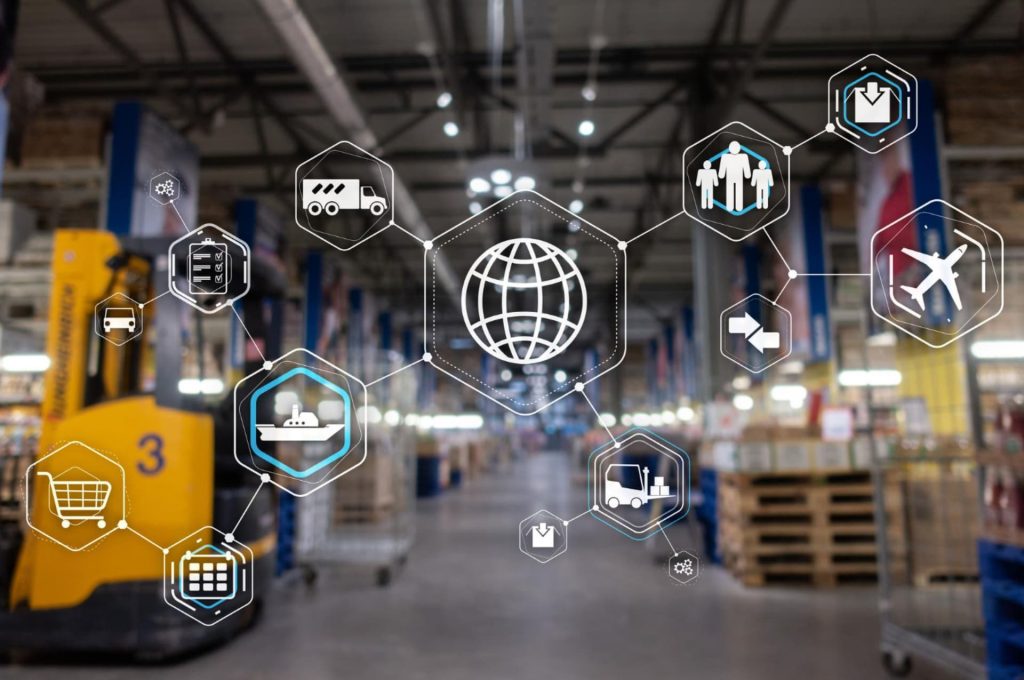
As we wrap up our exploration of e-commerce fulfillment, it’s clear that the backbone of online retail success lies in mastering the art of getting products into customers’ hands efficiently and reliably.
The journey through selecting the right fulfillment strategies, understanding the pivotal role of technology, and choosing the best fulfillment partners underscores a simple truth: fulfillment is not just a logistical challenge; it’s a strategic opportunity.

